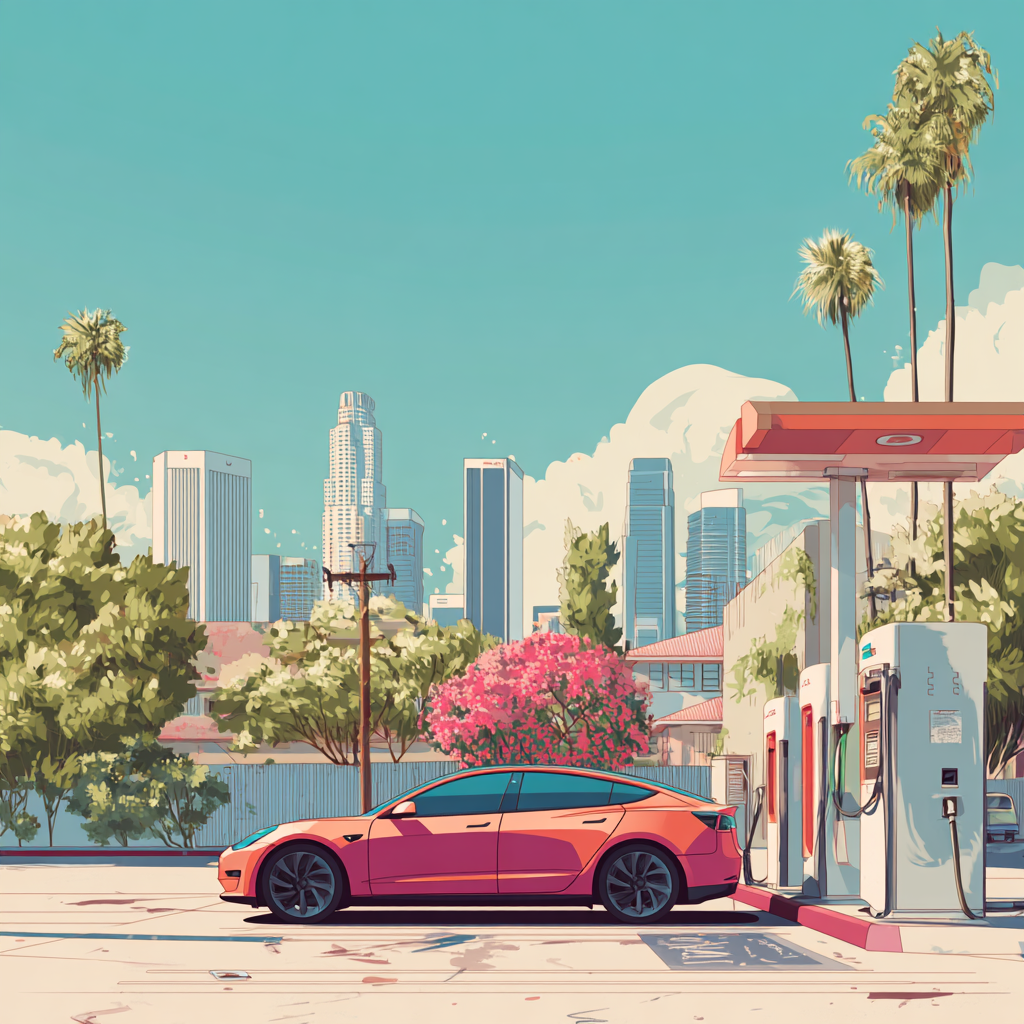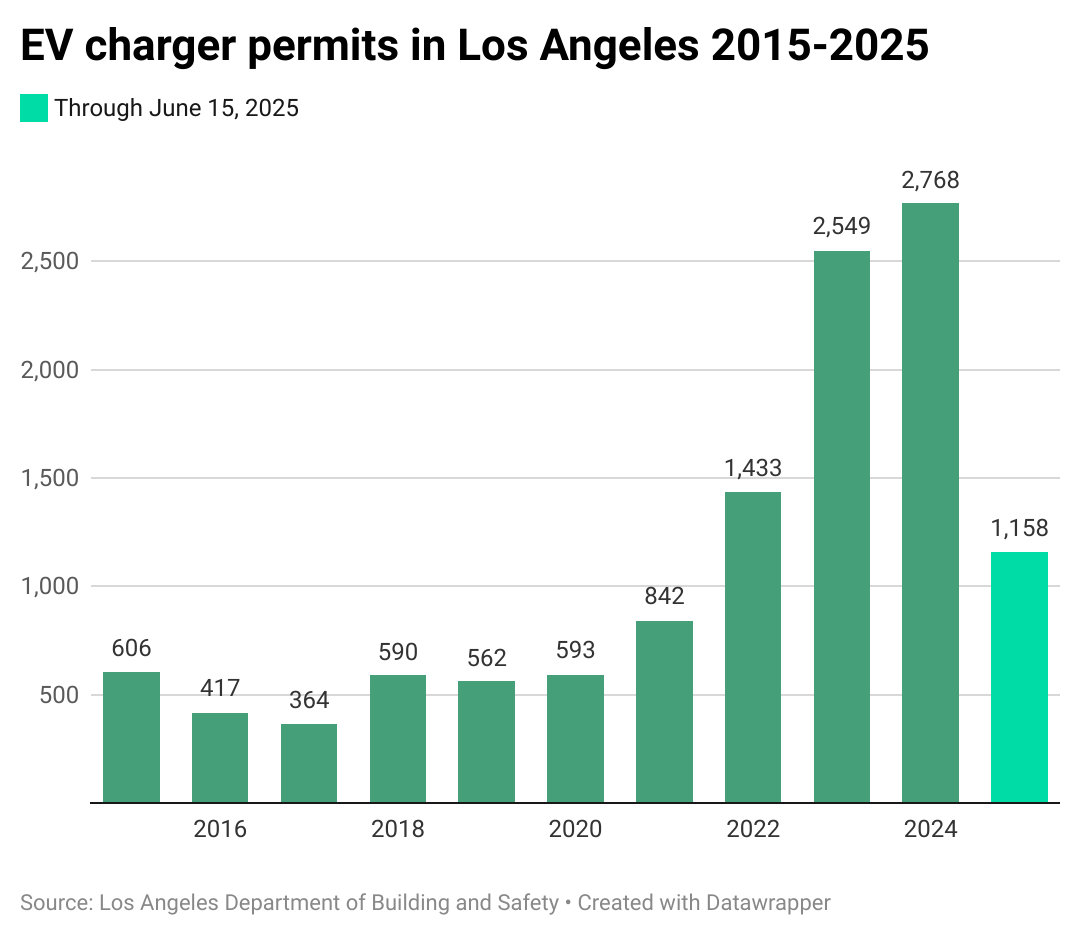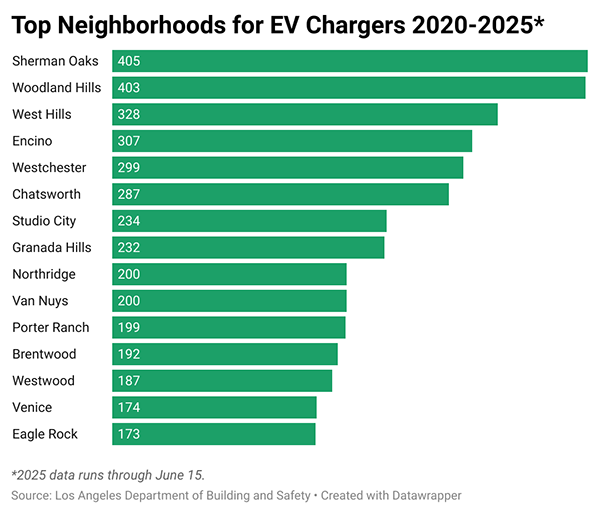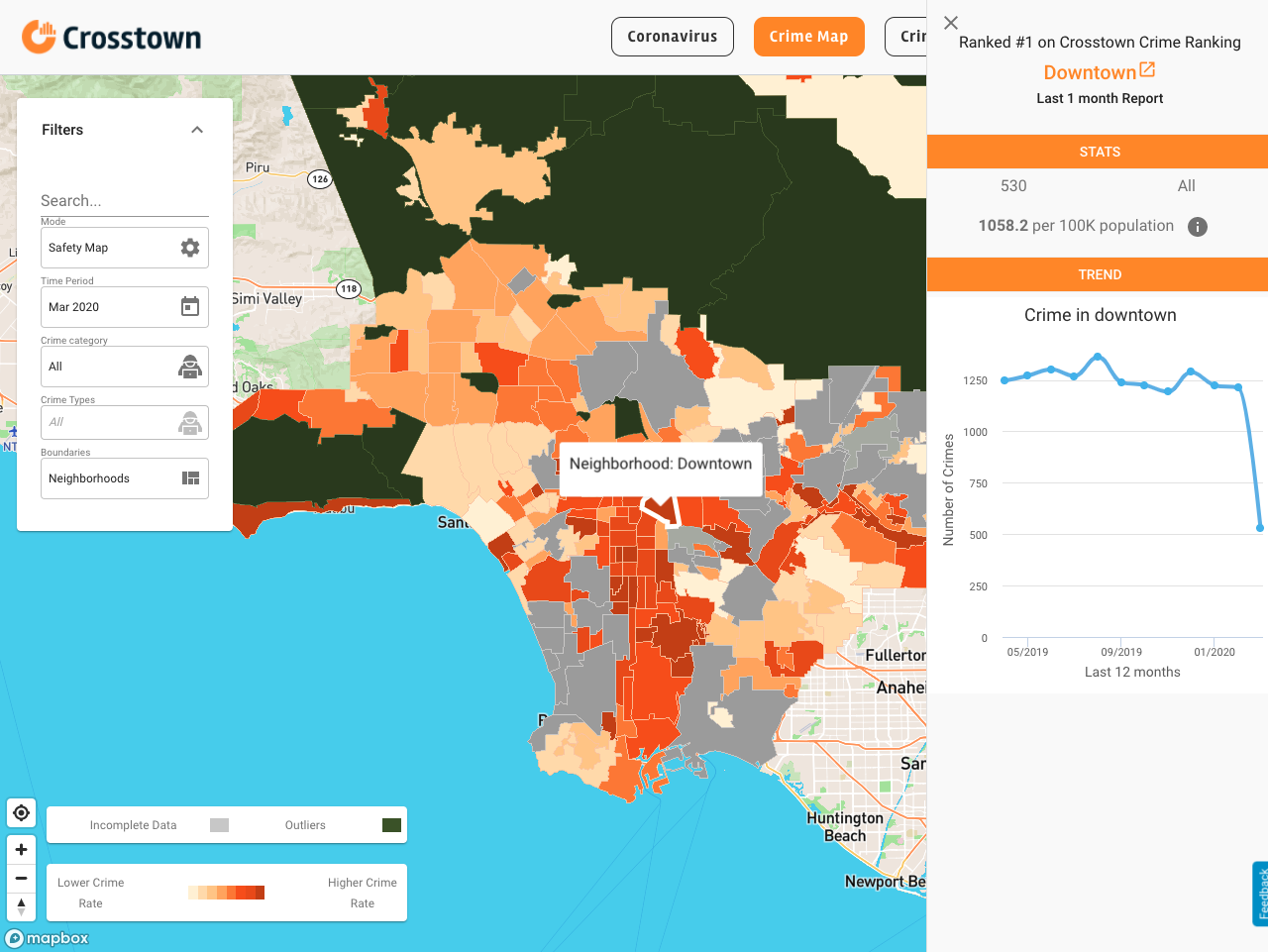Los Angeles keeps adding more EV chargers

(Image generated with MidJourney)
(This article has been updated. See correction below.)
Los Angeles installed more than quadruple the number of electric-vehicle chargers last year than it did just five years prior, pushing the city ever closer to a point where it’s as easy to charge up a car as it is to fill one with gas.
Citywide, the number of permits for EV chargers has risen from 593 in 2020 to 2,768 in 2024—marking seven consecutive years of increases, according to data from the Los Angeles Department of Building and Safety. In the past decade, nearly 12,000 total permits for chargers have been issued.

The growing ubiquity of chargers, both in people’s driveways and in public lots, chips away at what has long been one of the toughest roadblocks for electric vehicles–range anxiety. Previously, EV drivers frequently worried they might run out of charge before they could get to the nearest charger.
However, just as the charging infrastructure has improved, the appeal of EVs is uncertain amid a potential rollback of federal subsidies. In November, Gov. Gavin Newsom promised to bring back the state’s rebate program for electric vehicles if the Trump administration repealed federal tax credits, which grants buyers up to $7,500 per vehicle. The Senate on Tuesday passed a version of the Republican spending bill this week, which would reduce the incentives over a period of several years.
Avraham Zohari has been installing EV chargers for more than 20 years through his company, Plugin EV Charging Solution. “The convenience of having a charger installed in their residence is a life changing experience,” Zohari said.
EV drivers spend about 40% of what gas-powered drivers spend on fuel, though purchasing an EV is often more expensive. In California, advocates for EVs have tried to bring that cost down through a variety of programs, such as state subsidies for both chargers and EVs.
“I can’t tell you how many times I’ve heard about cost being a barrier to electric vehicles,” said Lisa Hart, the executive director of the Los Angeles Neighborhood Council Sustainability Alliance, a group of neighborhood councils that pushes for sustainable transportation. “But the fact is that there have been, at many points, really, really great, great incentive programs.”
For example, the city of Los Angeles offers rebates up to $1,000 to purchase and install a Level 2 EV charger.
As of June 1, the city rebated 2,139 residential and 4,762 commercial EV chargers this fiscal year alone, totaling 6,901. (The city’s fiscal year begins July 1.) The program is funded through California’s Low Carbon Fuel Standard and the federal Greenhouse Gas Reduction Funds.
The number of rebated residential chargers has been increasing, while commercial charger applications have dropped, according to Ellen Cheng, a spokesperson for the Los Angeles Department of Water and Power. During the 2023-24 fiscal year, the city rebated 7,584 chargers—1,624 of residential and 5,960 commercial. (Frequently, one permit on a commercial property can lead to the installations of numerous chargers.)
Upscale charging
Despite the generous incentive programs, the map of chargers in Los Angeles also reveals a longstanding economic divide. The neighborhoods with the greatest number of chargers are mostly well-off areas, particularly in the San Fernando Valley. Topping the list is Sherman Oaks, with 405 charging permits issued since 2020, followed by Woodland Hills, West Hills and Encino, each of which has more than 300.
Meanwhile, South Los Angeles neighborhoods including Watts, Historic South Central, Harvard Heights and Green Meadows all had fewer than 10 permits each.

Researchers have long noted that EV adoption across the United States is concentrated in higher-income areas. Rachel Connolly, a project director for air quality and environmental equity research at UCLA’s Luskin Center for Innovation, notes that disadvantaged communities collect a disproportionately small share of the rebates offered by the state. “There’s still really a long way to go to make the transition [to EVs] equitable.”
Driving becomes electric
Still, EV sales have grown dramatically across the state — from roughly 116,990 in 2020 to 443,374 in 2024, California Energy Commission data shows. Between 2023 and 2024, however, that progress on sales started to stall.

Compared with the rest of the nation, EV adoption in California remains strong, sustaining the highest rate in the country.
Correction: A previous version of this article contained a chart and references to annual totals that were incorrect due to a tabulation error. This version has been corrected.
How we did it: Crosstown analyzed 10 years of permit data for EV chargers from the Los Angeles Department of Building and Safety. Data on sales of TVs statewide comes from the California Energy Commission.
Have questions about our data? Write to us at askus@xtown.la






